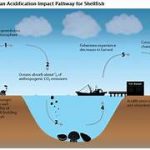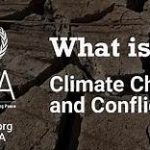Climate Change and the Increasing Risk of Heatwaves
Heatwaves are among the most alarming consequences of climate change, posing significant threats to human health, ecosystems, and infrastructure. As global temperatures rise due to the accumulation of greenhouse gases in the atmosphere, heatwaves are becoming more frequent, intense, and prolonged. This phenomenon has dire implications for society, ranging from public health crises to economic disruption.
This article delves into the relationship between climate change and the increasing risk of heatwaves, examining their causes, impacts, and the urgent need for adaptive measures to mitigate their effects.
Understanding Heatwaves
A heatwave is typically defined as an extended period of abnormally high temperatures, often accompanied by high humidity. The thresholds for what constitutes a heatwave vary by region, depending on the local climate and typical weather patterns. However, the overarching trend is clear: heatwaves are becoming more severe and widespread, largely due to climate change.
How Climate Change Fuels Heatwaves
- Global Temperature Rise
- Since the pre-industrial era, average global temperatures have risen by approximately 1.2°C. This warming is primarily driven by human activities, such as burning fossil fuels, deforestation, and industrial processes.
- As the Earth’s baseline temperature rises, the likelihood of extreme heat events increases. Even a small rise in average temperatures can lead to disproportionately large increases in the frequency and intensity of heatwaves.
- Changes in Atmospheric Circulation
- Climate change affects atmospheric patterns, including the jet stream, which can result in stagnant weather systems. These systems trap heat over a region, prolonging heatwaves.
- High-pressure systems, or “heat domes,” are becoming more common, causing air to sink and compress, leading to higher temperatures.
- Urban Heat Island Effect
- Cities, with their dense infrastructure and lack of vegetation, tend to be hotter than rural areas. This phenomenon exacerbates the impacts of heatwaves, making urban populations particularly vulnerable.
- Feedback Loops
- Heatwaves can trigger feedback mechanisms that further amplify global warming. For instance, higher temperatures can lead to increased energy consumption for cooling, resulting in more greenhouse gas emissions.
- Melting ice and snow reduce the Earth’s albedo (reflectivity), causing more solar radiation to be absorbed and accelerating warming.
Impacts of Heatwaves
1. Human Health
- Heat-Related Illnesses: Prolonged exposure to extreme heat can lead to heat exhaustion, heatstroke, and dehydration. Vulnerable populations, such as the elderly, children, and individuals with pre-existing health conditions, are at the highest risk.
- Increased Mortality: Heatwaves are silent killers, with heat-related deaths often going underreported. The 2003 European heatwave, for example, caused an estimated 70,000 deaths across the continent.
- Mental Health Effects: The stress of living through extreme heat, combined with disrupted routines and economic hardship, can take a toll on mental health.
2. Ecosystems and Biodiversity
- Habitat Destruction: Prolonged heatwaves can devastate ecosystems, leading to the loss of biodiversity. For instance, coral bleaching events are directly linked to rising ocean temperatures.
- Wildfires: Heatwaves often coincide with dry conditions, creating the perfect environment for wildfires. These fires not only destroy habitats but also release large amounts of carbon dioxide, further exacerbating climate change.
3. Agriculture and Food Security
- Extreme heat stresses crops, reducing yields and affecting food quality. Staple crops like wheat, maize, and rice are particularly vulnerable to high temperatures during critical growth stages.
- Heatwaves can also harm livestock, leading to decreased productivity and higher mortality rates.
4. Infrastructure and Economy
- Energy Demand: Heatwaves drive up electricity demand for air conditioning, straining power grids and leading to blackouts in some cases.
- Transportation Disruptions: High temperatures can warp roads, melt asphalt, and disrupt railways, affecting transportation networks.
- Economic Losses: The combined effects of reduced agricultural output, healthcare costs, and infrastructure damage result in significant economic losses.
Case Studies of Heatwaves
- The 2021 Pacific Northwest Heatwave
- Temperatures soared to unprecedented levels in regions unaccustomed to extreme heat, such as Canada and the northwestern United States. The heatwave claimed hundreds of lives and caused widespread disruptions.
- The 2019 Indian Heatwave
- India experienced one of its worst heatwaves, with temperatures exceeding 50°C in some areas. Water shortages and heat-related illnesses severely impacted millions of people.
- The 2023 Mediterranean Heatwave
- Southern Europe faced record-breaking temperatures, causing wildfires, hospitalizations, and disruptions to tourism. Olive and grape harvests were significantly affected, highlighting the economic toll of heatwaves on agriculture.
Future Projections for Heatwaves
Climate models indicate that heatwaves will continue to worsen if global greenhouse gas emissions remain unchecked. Key projections include:
- Increased Frequency: Heatwaves that were once rare are expected to become annual events in many regions.
- Higher Intensity: Temperatures during heatwaves will reach new extremes, testing the limits of human and ecological resilience.
- Broader Geographic Impact: Regions that historically experienced mild climates, such as northern Europe and coastal areas, will face more frequent heatwaves.
Mitigating the Risks of Heatwaves
Addressing the risks of heatwaves requires a combination of mitigation and adaptation strategies:
1. Reducing Greenhouse Gas Emissions
- Transitioning to renewable energy sources, improving energy efficiency, and adopting sustainable practices are critical to limiting global warming and reducing the frequency of extreme heat events.
2. Urban Planning and Green Infrastructure
- Increasing urban green spaces, such as parks and green roofs, can mitigate the urban heat island effect.
- Designing buildings with better insulation and natural ventilation can reduce reliance on air conditioning.
3. Early Warning Systems
- Developing and deploying advanced weather prediction technologies can help communities prepare for heatwaves. Public awareness campaigns can provide guidance on staying safe during extreme heat.
4. Heat-Resilient Agriculture
- Breeding heat-tolerant crop varieties and adopting sustainable farming practices can help secure food production in a warming world.
- Improved irrigation systems and water management practices are essential in drought-prone areas.
5. Healthcare Preparedness
- Strengthening healthcare systems to handle heat-related illnesses, especially in vulnerable regions, is vital. This includes training medical personnel and ensuring adequate supplies of cooling and hydration resources.
Individual Actions to Cope with Heatwaves
On a personal level, individuals can take steps to reduce their exposure to heatwaves and minimize their impact:
- Stay hydrated and avoid strenuous outdoor activities during peak heat hours.
- Use fans and air conditioning efficiently to conserve energy.
- Plant trees or participate in community greening projects to reduce local heat.
- Advocate for climate action policies at the local, national, and international levels.
Conclusion
Heatwaves are a stark reminder of the tangible impacts of climate change. As their frequency and intensity increase, the need for proactive measures becomes more urgent. Governments, businesses, and individuals must work together to reduce greenhouse gas emissions, enhance resilience, and protect the most vulnerable populations.
By investing in sustainable solutions and embracing a global commitment to climate action, we can mitigate the risks of heatwaves and build a more resilient future. The time to act is now, as the window to prevent the worst impacts of climate change continues to narrow.


